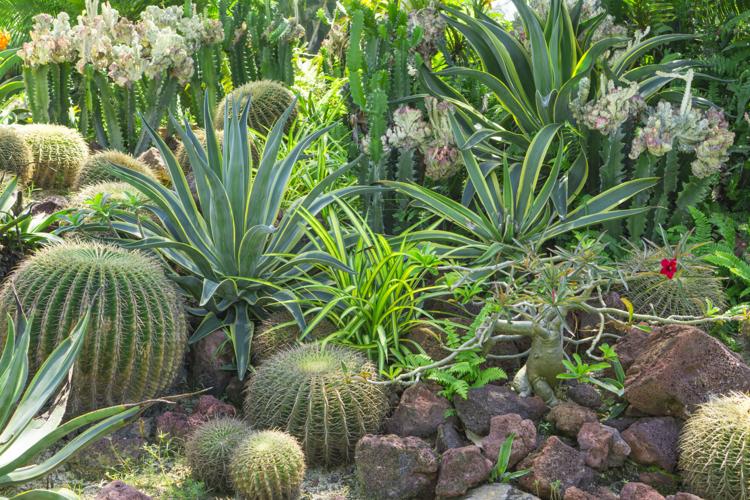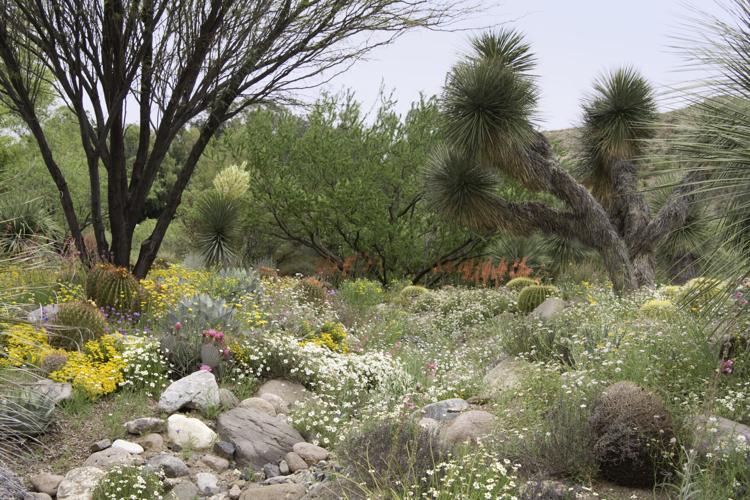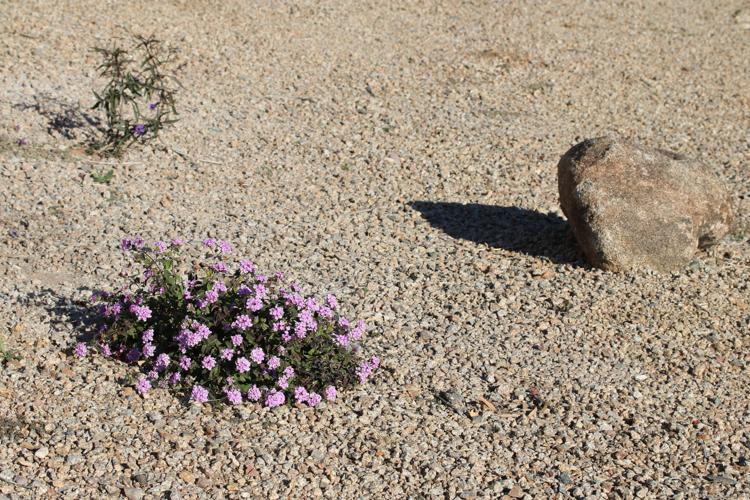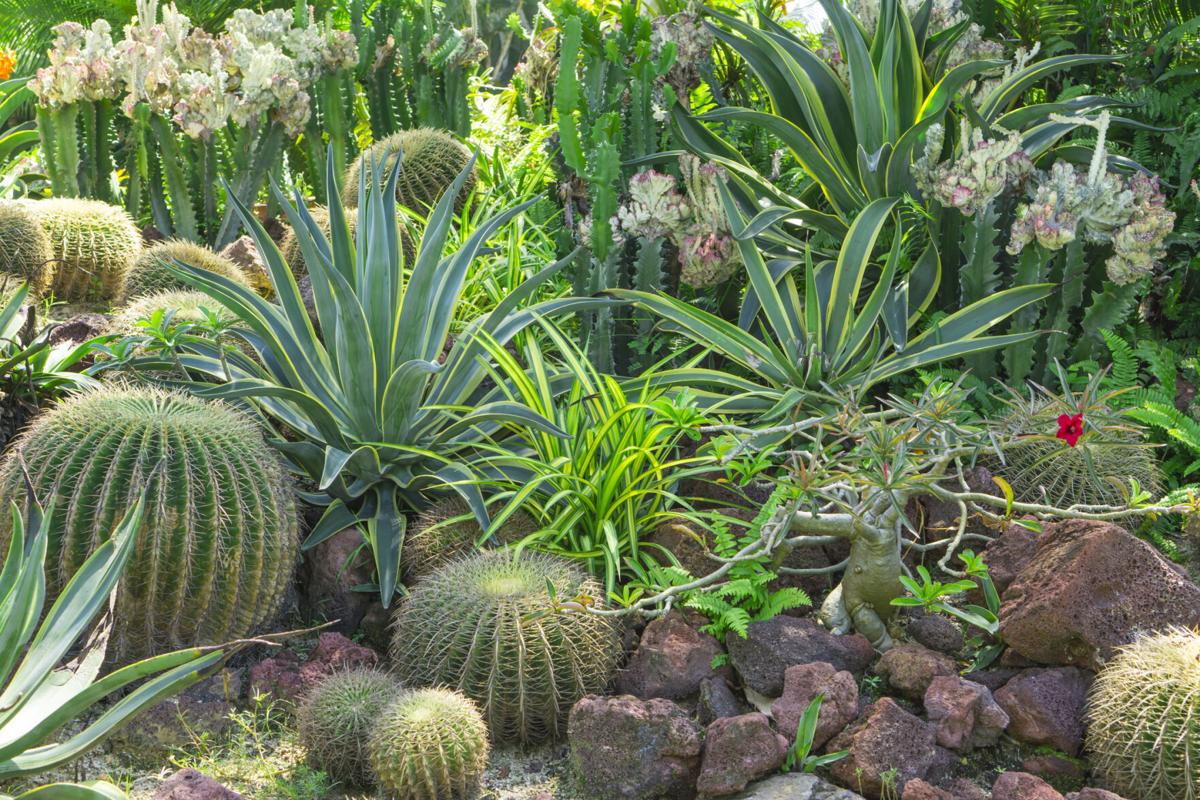Gravel and stone are used a fair amount in desert gardens. This is for two reasons. First, the materials reflect our natural surroundings, and second, they help demarcate our garden spaces without needing water (like plants do).
Most of us are at the point where we want to reduce our water use, but we still want to have garden spaces. Unfortunately, without guidance, it’s easy to overdo gravel use in your yard. This is what’s jokingly referred to as “zeroscaping” where an entire yard consists of one type of gravel with one or two isolated, sad plants.

An example of "zeroscaping." Don't worry, your garden can look much better than this.
To avoid having this look while minimizing your water use there are several strategies you can employ.
1. Use lots of very drought tolerant plants, such as cacti, agave and yucca and plant relatively close together so that the area looks lush. These plants will not require watering once they are established. Choose plants with different colors, textures and shapes. You can plant these in groups and clusters to create focal points all while conserving water.
2. Plant native trees. Mesquites will give you great shade. Ironwood trees are beautiful and also provide shade; they are relatively slow-growing, however. Desert willow is another favorite, and is winter deciduous so it’s a great choice for areas where you may want more winter light. Palo verde trees give you soft, dappled shade, but be sure to plant them away from structures. For more info on native trees, take a look at my article collection “Here's how to choose the right trees for your Tucson backyard.” You can then plant somewhat less sun-tolerant plants under the trees. The trees can provide shade for you, your house, and vehicles, too, if you plan ahead.
3. Plant native perennial plants. These will give you flowers and different leaf and plant shapes to work with so that you have some color in your garden. They are also softer looking than cacti and similar plants, and you have options for using plants that are thorn-free. You can also choose plants that are fragrant to give your garden the added dimension of scent. For lots of perennial plant choices, check out this great resource at Arizona Native Plant Society.

This gorgeous desert garden shows how much color native plants can impart in a garden.
4. Use gravel and stone to demarcate areas in the yard rather than as a mulch over the entire space. Organic mulch is better for most plants, with the exception of cacti, palms, agave and yucca. Gravel, on the other hand, is a great option for inexpensive paths. You can also use gravel and small stones to create the illusion of a small wash going through your property. It can even be more than an illusion — your faux wash can help take rainwater from your gutters, for instance, and convey it to planting beds.
5. Use plants of different heights to mimic natural landscapes. When you walk in the desert, or any other natural space, you’ll notice that there are several different plant heights. The overstory consists of the tall trees, then you have the taller shrubs, an understory of smaller plants, and the ground with groundcover plants. If you mimic this structure in your garden you will have a natural looking landscape.
6. Use different colors and textures of gravel in different areas. As mentioned above, you can use larger gravel and small stones to indicate a small wash. Fine gravel is great for pathways. Larger gravel works for garden beds with cacti, palms and succulents, which don’t do well with organic mulch. You can choose different gravel colors, but try not to have a rainbow of colors so that you have a cohesive look.
7. Use beautiful naturally occurring stone for accents and focal points. Do not place the stones on top of the gravel; rather, dig them in a bit so they look like they were naturally deposited. Before you place your stone, look at all of its sides and determine which direction they should be facing. Choose the prettiest sides to face the areas where people will be looking at them.
Using all of these design elements, your yard can have a lush and interesting look even while using very little additional water.
Inspiration on how to use desert-adapted plants in a formal garden design in the Tucson desert. Video by Dominika Heusinkveld/Arizona Daily Star







